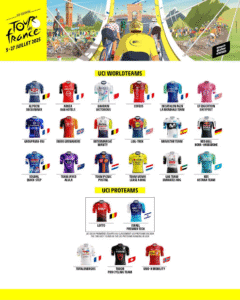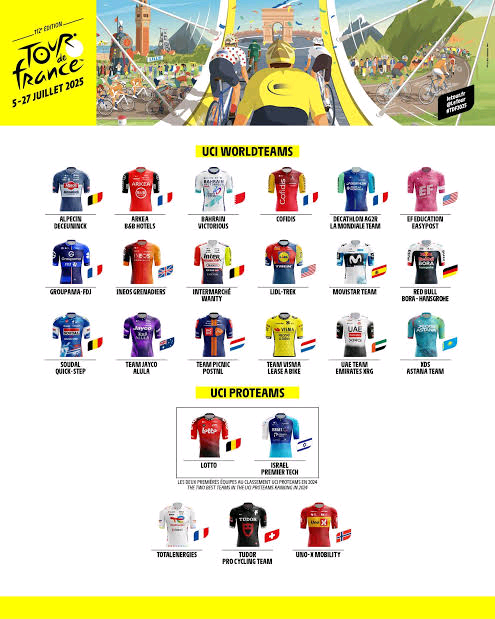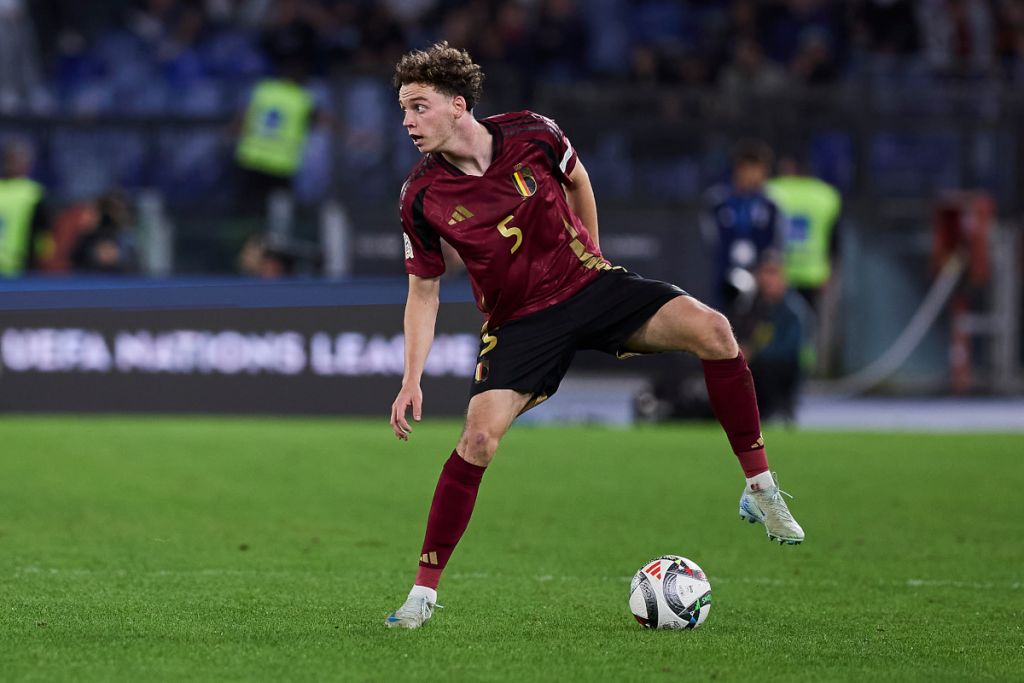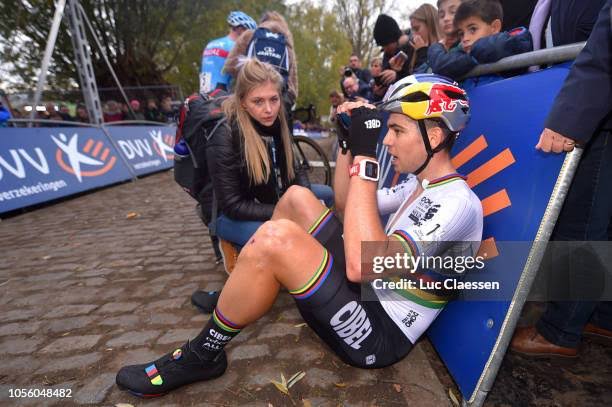The Tour de France Start List: An In-Depth Analysis of Teams, Contenders, and Expectations
The Tour de France, the most prestigious and grueling cycling race in the world, annually attracts a global audience eager to witness the finest cyclists competing across diverse terrains and iconic routes. Central to the excitement is the official start list—a carefully curated assembly of professional teams and riders, each vying for glory in the world’s most celebrated cycling event.
This article provides an exhaustive overview of the current Tour de France start list, examining the participating teams, star riders, emerging talents, and the strategic implications of the lineup. Whether you’re a seasoned cycling enthusiast or a newcomer eager to understand the race’s dynamics, this guide offers valuable insights into the anticipated battles and the narrative threads shaping this year’s edition.
1. The Significance of the Start List
The start list of the Tour de France is more than just a roster; it is a blueprint of the race’s potential storylines. It reflects team strategies, rider form, and the race’s overall competitive landscape. The composition of teams can influence race tactics profoundly, from aggressive breakaways to meticulous domestique support.

Key factors in analyzing the start list include:
– **Team Composition:** Which teams have strong general classification contenders? Do they also have sprinters or climbers to support different stages?
– **Star Riders:** Who are the marquee names, and what are their current forms and ambitions?
– **Emerging Talents:** Are there promising newcomers or young riders expected to make an impact?
– **Wildcard Entries:** Underrepresented or invitee teams that could upset expectations or showcase new talents.
2. The Participating Teams
The 2024 Tour de France features 22 teams, comprising the WorldTour teams and selected wildcard entries. These teams are categorized as follows:
– **UCI WorldTeams:** The top-tier professional teams with the most extensive resources, top riders, and international presence.
– **Wildcards:** Invited teams from lower tiers, often showcasing local talent or specialized rosters.

**Major WorldTeams Participating:**
– **Team Ineos Grenadiers:** Historically dominant, this team boasts a roster filled with GC contenders and strong domestiques.
– **Jumbo-Visma:** Known for their tactical brilliance and a roster featuring multiple potential winners.
– **Quick-Step Alpha Vinyl:** Specializing in sprints and classics, their presence ensures a competitive sprint stages.
– **AG2R Citroën Team:** A balanced squad with GC contenders and stage specialists.
– **EF Education-EasyPost:** Known for aggressive racing and breakaway specialists.
– **Movistar Team:** Traditionally strong climbers and GC contenders.
**Wildcard and Invited Teams:**
– Local French teams such as Groupama-FDJ and Arkéa-Selection bring national flavor and local knowledge.
– Emerging teams like Trek-Segafredo and Bahrain Victorious contribute fresh talents.
3. Key Contenders and Their Roster Highlights
The race’s outcome often hinges on a handful of top contenders. Their respective lineups provide insights into their ambitions and tactical approaches.
**Tadej Pogačar (UAE Team Emirates)**
– **Overview:** The reigning double champion (2020, 2021), Pogačar is renowned for his exceptional climbing and time-trialling abilities.
– **Key Teammates:** Marc Soler, Brandon McNulty, and João Almeida provide support in mountains and time trials.
– **Strategic expectations:** Pogačar aims for another GC victory, leveraging his all-around prowess.
**Dylan Teuns (Bahrain Victorious)**
– **Overview:** A strong climber and stage hunter, capable of threatening GC if the race unfolds favorably.
– **Support Crew:** Mikel Landa (if participating), others to support mountain efforts.
**Jonas Vingegaard (Jumbo-Visma)**
– **Overview:** The 2022 winner, Vingegaard’s squad is robust, with a focus on defending his title.
– **Teammates:** Primož Roglič, Wout van Aert, and Sepp Kuss bolster his chances.
– **Race Strategy:** A mix of aggressive climbing and tactical patience
**Remco Evenepoel (Soudal-Quick Step)**
– **Overview:** A rising star with exceptional time-trial skills and climbing ability.
– **Supporting Riders:** Tim Declercq, Pieter Serry, and others for stage support.
– **Goals:** Potential GC contender and stage winner.
**Geraint Thomas (Ineos Grenadiers)**
– **Overview:** A seasoned veteran with multiple Grand Tour victories, aiming for another GC challenge.
– **Support:** Richard Carapaz, Pavel Sivakov.
4. Notable Newcomers and Young Talents
The Tour often serves as a stage for emerging talents to showcase their abilities.
– **Remco Evenepoel:** At just 24, he’s considered a favorite for GC with his all-round capabilities.
– **Enric Mas:** Continuing to develop as a GC contender, with a solid team backing.
– **Mateo Jorgenson:** A young American climber capable of surprising in mountainous stages.
– **Victor Lafay:** A sprinter with potential for stage wins in flat or hilly finishes.
5. Team Strategies and Race Dynamics
The composition of each team influences the race’s tactical fabric:
– **GC Teams:** Jumbo-Visma, UAE, Ineos, and Movistar will likely set the pace in the mountains, controlling breakaways and protecting their leaders.
– **Sprinter Teams:** Quick-Step, Alpecin-Fenix, and Lotto Soudal aim for stage wins in flat sprints.
– **Breakaway Specialists:** EF Education and Arkéa-Samsic often support aggressive early moves, seeking stage victories or to unsettle GC contenders.
– **Climber Support:** Teams like BORA-hansgrohe and Cofidis provide support for their GC leaders or stage hunters.
6. The Route and Its Impact on the Start List
The route of the 2025.Tour influences team strategies and rider selections:
– **Mountain Stages:** Highlight the importance of climbers and GC contenders.
– **Time Trials:** Teams with strong time trialists can gain valuable seconds.
– **Sprint Stages:** Favor sprinter teams and their lead-out trains.
– **Inclement Weather and Unpredictable Conditions:** Can cause surprises, favoring versatile riders.
—
7. Conclusion: Anticipating the Race
The 2024 Tour de France start list hints at an exhilarating edition, with a mix of experienced champions, rising stars, and tactical teams eager to carve their mark. The presence of multiple GC contenders ensures a fiercely contested battle across the Pyrenees and Alps, while sprint and breakaway specialists promise exciting stage finishes.
As the race unfolds, the strategic interplay among teams will determine how the storylines develop—whether it’s a straightforward defense by reigning champions or an unpredictable rollercoaster of surprises.
**Keep an eye on the official start list updates, team lineups, and rider form assessments as the race approaches. With such a diverse and talented field, the 2025 Tour de France is poised to deliver unforgettable moments and historic achievements.*m



